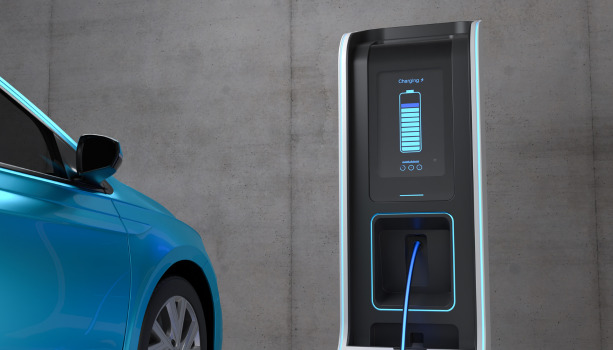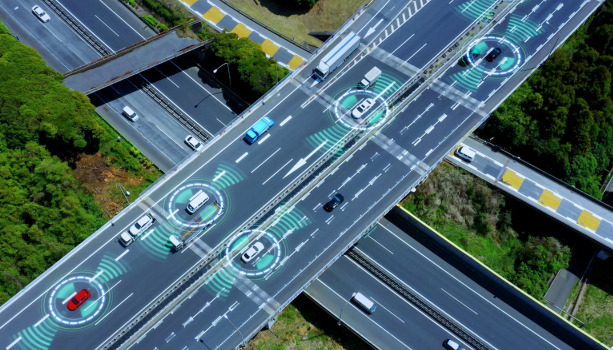Autonomous driving technology has come a long way. In recent years, the automotive tech industry has made significant enhancements to the capability and reliability of sensors, cameras, and vehicle-to-everything (V2X) communication, driving road transport toward higher levels on the autonomous driving spectrum, as defined by the SAE’s Levels of Driving Automation.

This spectrum has become an internationally recognized classification for automated driving systems. Its six levels can be divided into two broad categories: driver support systems from L0 to L2 (shown in blue), and automated driving systems from L3 to L5 (shown in green). For the past several years, industry players have been working to make the jump from L2 to L3.
From Level 2 to Level 3 Autonomous Driving, a Legal Matter
Clearly, the leap from L2 to L3 is the most significant leap on the spectrum. Whereas L2 is considered as advanced driver support features, L3 marks the beginning of conditional autonomous driving, where drivers can legally take their eyes off the road when conditions are met. Strictly speaking, only vehicles classified as L3 and above are truly autonomous vehicles.
By today, most major automotive OEMs have mastered their technologies for L2 autonomy. As of the beginning of 2023, L2 driver support systems include Tesla’s Autopilot with “Full Self-Driving”, Audi’s Traffic Jam Assist, GM’s Super Cruise, BMW’s Extended Traffic Jam Assistant, Ford’s Blue Cruise, Hyundai’s autonomous driving package, and many more.
Now, a problem arises when OEMs seek to introduce vehicles with Level 3 autonomous driving. Looking at SAE’s autonomous driving spectrum again, the levels of autonomy are not defined by a vehicle’s self-driving capability, but instead by the expected roles of the vehicle and the human driver. For instance, under L2, the human driver must pay full attention to the road even when all driver support systems are on, whereas in L3, the human driver can officially take their eyes off the road when the automated driving systems are switched on.
Therefore, if an OEM wants to officially introduce an L3 vehicle, it must be liable for all potential accidents that occur while the vehicle’s L3 systems are switched on. That is, no matter how advanced and sophisticated the technology inside a vehicle might be, if the OEM is not ready to claim responsibility for accidents caused by its systems, the vehicle can only be classified as high as L2.
The truth is, although the technology for Level 3 autonomous driving might be ready, many OEMs are not yet prepared to officially claim L3 for legal reasons. This explains why Tesla uses the name “Full Self-Driving” to market its L2 driver support systems without mentioning L3 autonomy. Some OEMs use the term “L2+” to show that their technological capabilities have surpassed L2, yet do not claim L3. Hence, the gap between L2 and L3 is more of a legal gap than a technological gap.
Official Certifications Needed for L3 Autonomy
Since L3 is the first level on the SAE’s spectrum to allow drivers to take their eyes off the road, official certifications and approvals are needed before OEMs can claim a vehicle to be L3. These certifications are often issued by regional transport authorities and highway safety agencies.
In May 2022, Mercedes-Benz became the world’s first manufacturer to get approved by German transport authorities to legally operate its L3 Drive Pilot on the country’s public roads, sold as an option on Mercedes-Benz S Class and Mercedes EQS. This means that those with L3 Drive Pilot are legally allowed to eat, draft emails, or watch videos on the Autobahn. Still, given that L3 autonomy is conditional, if the vehicle loses the environmental or locational conditions to operate at L3, it will prompt the driver to take control within ten seconds. If the driver fails to respond in ten seconds, the car will automatically turn on emergency lights and decelerate to a full stop on the side of the road, then unlock the doors in case first responders might need access to the cabin.
At CES 2023, Mercedes-Benz further announced that it has become the first manufacturer to receive L3 certification in the United States, from the state of Nevada. However, since L3 approval is granted at a state level in the US, the system is only considered L3 in Nevada for now. Nonetheless, the OEM says its Drive Pilot is fully ready to deliver L3 autonomous driving in all 50 states.
Is Level 3 Autonomous Driving Coming to the Mass Market in 2023?
Mercedes is the first manufacturer to make the bold move to bring L3 autonomy to the consumer market. Although Honda Legend won the title for the world’s first approved L3 vehicle back in 2021, only 100 limited-edition vehicles were available for lease only in Japan. Honda’s L3 road map suggests it may take much longer to reach the mass market.
There is no doubt that more and more manufacturers will follow Mercedes’ move towards L3 autonomy. Major OEMs like Hyundai-Kia, Stellantis, BMW, GM, and Honda are continuously reporting progress and plans for L3 rollout. However, it is always easy for OEMs to announce plans and schedules but difficult to make the final decision to obtain L3 approval. Even Mercedes’ L3 Drive Pilot is available for the S Class only, and legally approved in very limited regions (Germany and Nevada). Apart from legal concerns, sensitive public reactions toward flaws in automated driving systems make OEMs more reluctant to introduce L3 vehicles on a large scale.
Hence, although the news is filled with press releases and announcements on launching L3 systems, it is unlikely to see L3 vehicles being available to the mass market within 2023. Nevertheless, following the path of Mercedes-Benz, more and more OEMs will likely launch L3 options for their high-end vehicles in limited regions within the year.
Addressing the Challenges Ahead
Achieving Level 3 autonomy is beyond a matter of technological capability, but a matter of confidence – the confidence that OEMs possess towards their automated driving systems. Before OEMs can gain full confidence in taking responsibility for their automated driving systems, several potential risks need to be addressed. One of them is cybersecurity risk.
Since automated driving features are run by software, these software-defined vehicles (SDV) must not be vulnerable to cyberattacks. If a threat actor were to gain access to a vehicle’s embedded systems and applications, they could gain the ability to tamper with driving data and potentially take control over crucial functions of the vehicle.
AUTOCRYPT has always envisioned a world of L3 and L4 autonomy. Since its inception, it has been working with OEMs and software providers to secure the in-vehicle systems and communication endpoints of SDVs through its industry-leading encryption and authentication technologies, offering solutions from vulnerability testing to intrusion detection and protection.
To learn more about how AUTOCRYPT secures the SDV, download the white paper below.

“The changing tides of the automotive industry into more software, and less hardware, indicate that vehicles will be a possible target for cyberattacks. This is why holistic, comprehensive cybersecurity is essential in securing the next generation of SDVs.”



